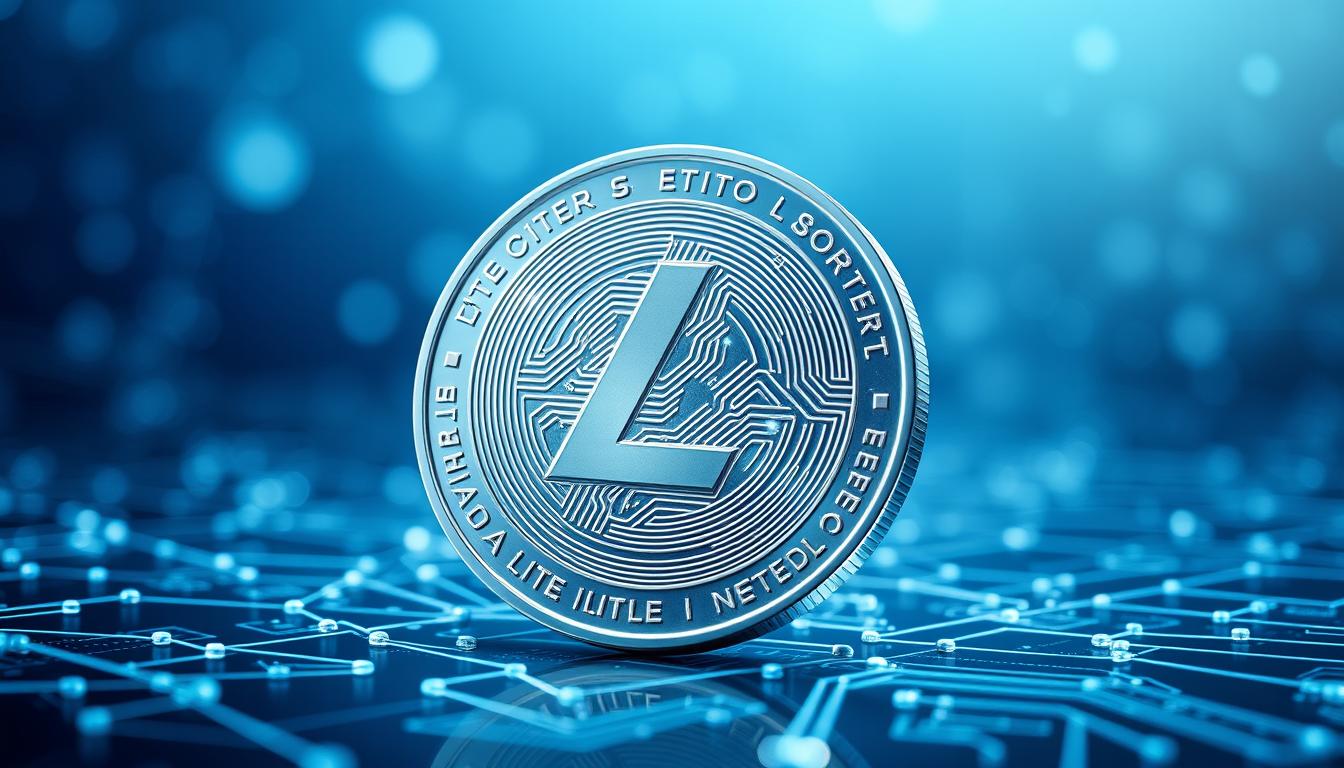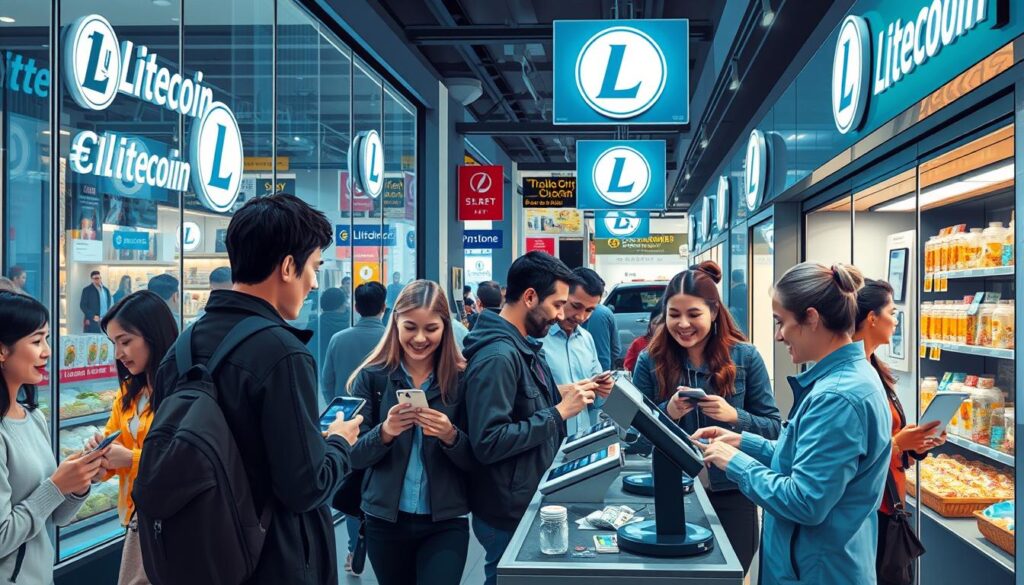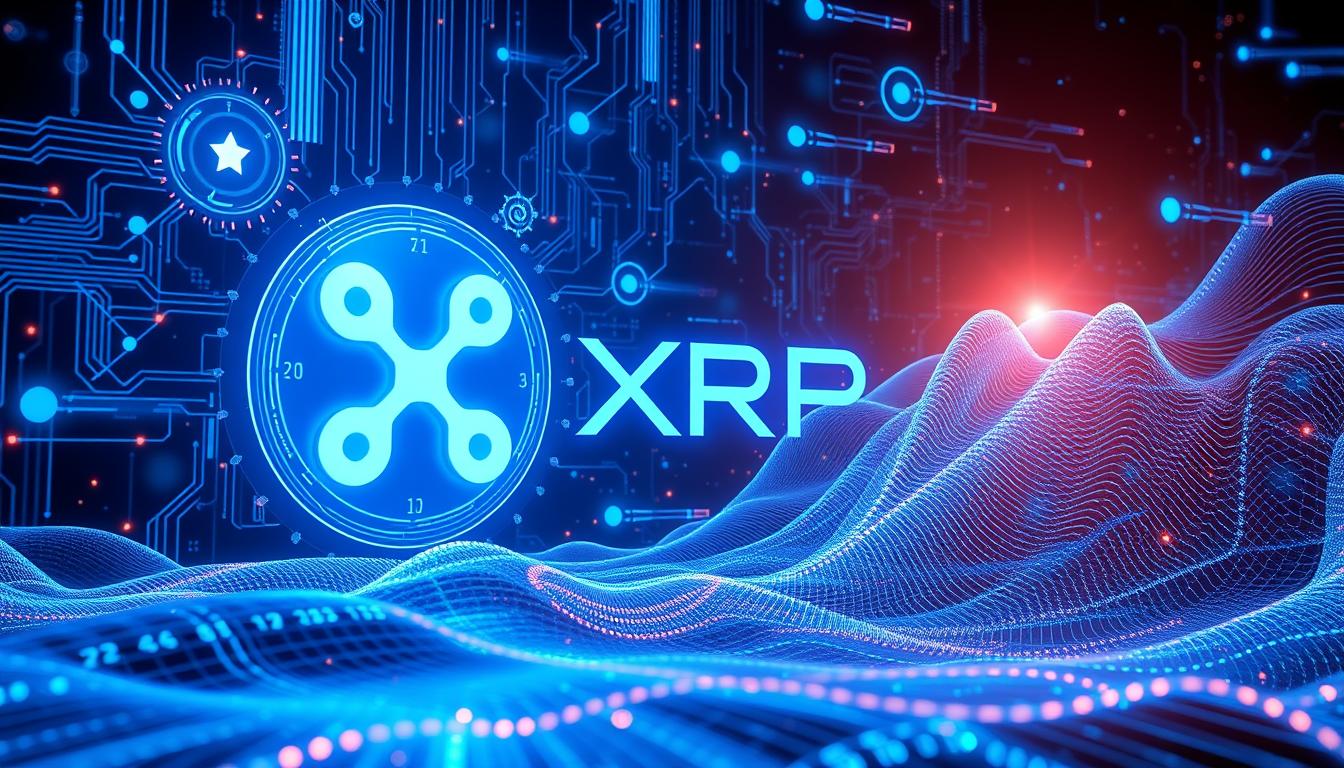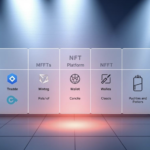Now Reading: Litecoin (LTC): Fast, Secure Digital Currency
- 01
Litecoin (LTC): Fast, Secure Digital Currency
Litecoin (LTC): Fast, Secure Digital Currency

In the ever-evolving world of cryptocurrency, Litecoin (LTC) has established itself as a formidable player, offering a fast, secure, and affordable alternative to the dominant Bitcoin. Launched in 2011 by Charlie Lee, a former Google engineer, Litecoin was designed to address some of the limitations of the original cryptocurrency, providing quicker transaction times and lower fees for everyday digital transactions.
As an altcoin based on the same blockchain technology as Bitcoin, Litecoin has carved out its own unique niche in the cryptocurrency market. With its distinct features and ongoing development, Litecoin has become a viable option for individuals and businesses seeking a reliable and efficient digital currency solution.
Key Takeaways
- Litecoin (LTC) is a decentralized, peer-to-peer cryptocurrency launched in 2011 as an alternative to Bitcoin.
- Litecoin is designed to provide faster, more affordable digital transactions for everyday use.
- Litecoin is based on the same blockchain technology as Bitcoin but with distinct features that make it a unique and viable option.
- Litecoin has served as a testing ground for Bitcoin improvements, such as SegWit and the Lightning Network.
- Despite market fluctuations, Litecoin remains a significant player in the cryptocurrency market with ongoing development projects.
What is Litecoin (LTC)?
Litecoin, or LTC, is a decentralized blockchain-based cryptocurrency that was created in 2011 by Charlie Lee, a former Google engineer. Litecoin was designed as a faster and more efficient alternative to the popular Bitcoin cryptocurrency, utilizing the same underlying blockchain technology but with several key differences.
Origins and Fundamentals
Litecoin was launched in October 2011 as a “lite version” of Bitcoin, aiming to address some of the perceived limitations of the original cryptocurrency. Like Bitcoin, Litecoin is a peer-to-peer, cryptographic currency, but it differs in several ways, including a faster block time and a larger maximum supply.
Litecoin’s Unique Features
One of Litecoin’s key distinguishing features is its use of the Scrypt algorithm for mining, which is designed to be more resistant to ASIC-based mining than the SHA-256 algorithm used by Bitcoin. This makes Litecoin more accessible to individual miners, as it can be mined using consumer-grade hardware. Additionally, Litecoin’s focus on being a payment network for everyday transactions, rather than a store of value like Bitcoin, sets it apart in the cryptocurrency market.
This oft-cited phrase reflects Litecoin’s position as a complementary cryptocurrency to Bitcoin, with its own unique features and use cases.
How Litecoin (LTC) Works
At the core of Litecoin (LTC) is the innovative blockchain technology, which serves as a decentralized, transparent digital ledger that records all transactions across a peer-to-peer network. This distributed network ensures the security and integrity of the Litecoin ecosystem, where new blocks are added to the blockchain every 2.5 minutes, significantly faster than Bitcoin’s 10-minute block time.
Blockchain Technology Explained
The Litecoin blockchain is a constantly growing database of ordered, time-stamped records, known as blocks, which are linked and secured using cryptographic principles. Each block contains a number of Litecoin transactions, with the blockchain acting as a permanent and unalterable record of all past transactions. This decentralized nature, coupled with advanced cryptography, makes the Litecoin network highly resistant to manipulation or tampering.
Mining and Transaction Process
- Litecoin mining is the process of verifying and adding new transactions to the blockchain, with miners being rewarded in Litecoin for their computational efforts.
- Miners use their computer hardware to solve complex mathematical problems, allowing them to validate and add new blocks to the Litecoin blockchain.
- Once a transaction is verified by the network, it is added to the blockchain, ensuring the security and transparency of the Litecoin ecosystem.
The Litecoin network’s fast block times and efficient transaction processing make it an attractive choice for everyday purchases and payments, positioning it as a viable alternative to traditional fiat currencies and other cryptocurrencies.
“Litecoin is designed to be the silver to Bitcoin’s gold, with faster transaction times and lower fees, making it ideal for everyday transactions.”
| Feature | Litecoin (LTC) | Bitcoin (BTC) |
|---|---|---|
| Block Time | 2.5 minutes | 10 minutes |
| Transaction Fees | Typically lower than Bitcoin | Typically higher than Litecoin |
| Scalability | Higher than Bitcoin | Lower than Litecoin |
Advantages of Litecoin (LTC)
One of the key advantages of Litecoin (LTC) is its impressive speed and efficiency in processing transactions. With a block time of just 2.5 minutes, Litecoin is able to confirm transactions much faster than Bitcoin, which has a block time of 10 minutes. This makes Litecoin particularly well-suited for smaller, everyday transactions where speed is of the essence.
Additionally, Litecoin’s transaction fees are typically lower than those of Bitcoin, making it a more cost-effective option for users. This combination of speed and efficiency has contributed to Litecoin’s growing popularity as a digital currency for fast and affordable transactions.
Speed and Efficiency
Litecoin’s speed and efficiency can be attributed to its innovative blockchain technology. The Litecoin network is designed to process transactions more quickly and with lower fees than other cryptocurrencies, making it an attractive choice for users who value fast and cost-effective transactions.
“Litecoin’s speed and low fees make it an excellent choice for everyday transactions, whether you’re buying coffee or sending money to a friend.”
Litecoin (LTC) and Cryptocurrency Market
As one of the pioneering altcoins, Litecoin (LTC) has established itself as a significant player in the broader cryptocurrency market. With its market capitalization and trading volume consistently ranking it among the top digital currencies, Litecoin has carved out a niche alongside the dominant Bitcoin.
Litecoin’s unique features, including its faster transaction times and lower fees compared to Bitcoin, have contributed to its widespread adoption and acceptance. This has positioned Litecoin as a viable alternative for those seeking a more efficient means of conducting digital transactions, particularly for smaller-scale payments.
“Litecoin has proven to be a reliable and innovative altcoin that continues to evolve alongside the rapidly changing cryptocurrency landscape.”
The growing popularity of Litecoin has also attracted the attention of institutional investors and major financial players, further solidifying its position in the market. As the cryptocurrency market matures, Litecoin remains a key component in the diversification of digital asset portfolios.
Litecoin’s Market Performance
Over the years, Litecoin has demonstrated its resilience and ability to weather market fluctuations. Its price movements and trading volumes have often mirrored the broader trends in the cryptocurrency market, making it a valuable barometer for overall market sentiment.
- Litecoin’s market capitalization currently places it among the top 10 cryptocurrencies by size.
- The trading volume of Litecoin has also remained steady, reflecting its continued liquidity and demand in the market.
- Litecoin’s adoption by merchants and service providers has further solidified its position as a viable altcoin option for everyday transactions.
As the cryptocurrency market continues to evolve, Litecoin remains a prominent and influential player, offering investors and users a reliable and efficient digital currency option.
Litecoin (LTC) Wallets and Security
Litecoin, like other cryptocurrencies, requires a digital wallet to store and manage your Litecoin holdings. These wallets come in various forms, each with its own set of features and security considerations. Maintaining the security of your Litecoin wallet is crucial, as it helps protect your digital assets from unauthorized access or theft.
Types of Litecoin (LTC) Wallets
Litecoin wallets can be categorized into three main types:
- Software wallets: These are applications that you can install on your computer or mobile device, providing a user-friendly interface to access and manage your Litecoin funds.
- Hardware wallets: These are physical devices that store your Litecoin private keys offline, making them one of the most secure options for storing your cryptocurrency.
- Online wallets: Also known as web wallets, these are hosted by third-party providers and allow you to access your Litecoin from any internet-connected device.
Securing Your Litecoin (LTC)
Keeping your Litecoin secure is essential, and there are several best practices you should follow:
- Use a strong, unique password for your Litecoin wallet.
- Enable two-factor authentication (2FA) to add an extra layer of security to your wallet.
- Store your private keys in a secure location, such as a hardware wallet or a safe deposit box.
- Keep your software and device firmware up-to-date to ensure the latest security patches are applied.
- Regularly back up your wallet to protect your Litecoin holdings in case of device loss or damage.
By following these security best practices, you can help safeguard your Litecoin (LTC) from potential threats and ensure the long-term protection of your digital assets.
“The security of your Litecoin wallet is the foundation of your cryptocurrency holdings. Treat it with the utmost care and attention.”
Using Litecoin (LTC) for Transactions
Litecoin (LTC) has emerged as a popular digital currency for everyday transactions due to its fast confirmation times and low fees. As Litecoin’s merchant adoption continues to grow, it has become an increasingly attractive payment option for both consumers and businesses.
Merchant Adoption
Many online and offline merchants have started accepting Litecoin as a form of payment, recognizing its potential as a convenient and cost-effective digital payment method. Litecoin’s fast transaction times and low fees make it an appealing choice for merchants, as it reduces the costs and risks associated with traditional payment methods.
Some notable examples of Litecoin merchant adoption include:
- Online retailers like Overstock.com, which has been accepting Litecoin as a payment option since 2014.
- Travel booking platforms like CheapAir.com, which allows customers to book flights and hotels using Litecoin.
- Brick-and-mortar businesses, such as restaurants, cafes, and service providers, that have started accepting Litecoin payments at their physical locations.
As more merchants adopt Litecoin, it could play an increasingly important role in the broader cryptocurrency ecosystem, providing a reliable and user-friendly payment method for everyday transactions.
| Merchant | Industry | Litecoin (LTC) Adoption |
|---|---|---|
| Overstock.com | Online Retail | Accepting Litecoin payments since 2014 |
| CheapAir.com | Travel Booking | Allows customers to book flights and hotels using Litecoin |
| Local Restaurants and Cafes | Food and Beverage | Accepting Litecoin payments at physical locations |
The increasing adoption of Litecoin (LTC) by merchants highlights the cryptocurrency’s growing utility and potential to become a mainstream payment option in the future.

Litecoin (LTC) Mining and Rewards
Litecoin, like its counterpart Bitcoin, is secured by a network of miners who utilize their computing power to validate and add new transactions to the blockchain. These dedicated miners are rewarded with Litecoin for their efforts, providing an incentive for them to contribute to the network’s security and decentralization.
The Litecoin mining process is designed to be more energy-efficient and accessible to individual miners compared to Bitcoin, thanks to its use of the Scrypt algorithm. This algorithm is memory-hard, meaning it requires more memory than the SHA-256 algorithm used by Bitcoin, making it less suitable for specialized mining hardware (ASICs).
As a result, Litecoin mining can be done with more widely available consumer-grade hardware, such as graphics processing units (GPUs), making it more accessible to a broader range of participants. This, in turn, helps to maintain the decentralized nature of the Litecoin network.
| Mining Parameter | Litecoin (LTC) | Bitcoin (BTC) |
|---|---|---|
| Mining Algorithm | Scrypt | SHA-256 |
| Block Time | 2.5 minutes | 10 minutes |
| Block Reward | 12.5 LTC | 6.25 BTC |
| Total Coins | 84 million | 21 million |
The Litecoin network’s mining rewards, combined with its unique mining algorithm, contribute to its growing popularity and adoption as a fast, secure, and decentralized digital currency.
Investing in Litecoin (LTC)
As with any cryptocurrency, investing in Litecoin (LTC) carries certain risks and considerations that investors must be aware of. The volatile nature of the cryptocurrency market, potential regulatory changes, and the risk of hacking or theft of Litecoin holdings are all factors that must be taken into account.
Risks and Considerations
When considering an investment in Litecoin, investors should carefully research the cryptocurrency and the broader cryptocurrency landscape. Volatility in the market can lead to significant price fluctuations, making Litecoin a high-risk investment. Additionally, the risk of hacking or theft of your Litecoin holdings is a concern, underscoring the importance of secure storage and management of your digital assets.
- Volatility in the cryptocurrency market
- Potential regulatory changes that may impact Litecoin
- Risk of hacking or theft of Litecoin holdings
To mitigate these risks, investors are advised to diversify their portfolio and only invest what they can afford to lose. By carefully researching Litecoin and the broader cryptocurrency landscape, investors can make informed decisions and take appropriate measures to protect their investments.
| Risk | Explanation |
|---|---|
| Volatility | The cryptocurrency market is known for its high volatility, with significant price fluctuations that can lead to substantial gains or losses for investors. |
| Regulatory Changes | Governments and regulatory bodies may introduce new laws or policies that could impact the use and adoption of Litecoin and other cryptocurrencies. |
| Hacking and Theft | Cryptocurrency exchanges and wallets can be vulnerable to hacking, leading to the potential loss or theft of Litecoin holdings. |
By understanding the risks and considerations associated with investing in Litecoin (LTC), investors can make informed decisions and take appropriate measures to protect their digital assets.

“Investing in cryptocurrency is not for the faint of heart. It’s important to thoroughly research the market, understand the risks, and only invest what you can afford to lose.”
Litecoin (LTC) Development and Community
The ongoing development and active community surrounding Litecoin (LTC) play a vital role in its continued growth and evolution. Litecoin’s core development team, led by accomplished blockchain experts, works tirelessly to enhance the cryptocurrency’s technology, security, and functionality.
Improvements in Litecoin’s scalability, transaction speed, and energy efficiency have been the focus of recent updates, ensuring the currency remains a competitive and viable option in the rapidly evolving cryptocurrency market. The Litecoin community, comprising users, merchants, and enthusiasts, actively participates in the decision-making process, providing valuable feedback and contributing to the currency’s roadmap.
This collaborative effort between the development team and the broader community has been instrumental in maintaining Litecoin’s position as a leading blockchain technology. As Litecoin continues to evolve, the strong community support and ongoing development work will be crucial in driving its widespread adoption and solidifying its place in the digital currency landscape.
FAQ
What is Litecoin (LTC)?
Litecoin is a decentralized, peer-to-peer cryptocurrency that was created in 2011 as an alternative to Bitcoin. It is designed to provide fast, secure, and affordable digital transactions for everyday use. Litecoin is based on the same blockchain technology as Bitcoin, but with some key differences that make it a unique and viable option in the cryptocurrency market.
What are the origins and fundamentals of Litecoin?
Litecoin was created by Charlie Lee, a former Google engineer, as a faster and more efficient alternative to Bitcoin. It utilizes the same underlying blockchain technology as Bitcoin, but with several key differences, such as a faster block time and a larger maximum supply. Litecoin’s unique features include its use of the Scrypt algorithm for mining, which is designed to be resistant to ASIC-based mining, and its focus on being a payment network for everyday transactions.
How does Litecoin (LTC) work?
Litecoin, like Bitcoin, is built on blockchain technology, which is a decentralized, distributed digital ledger that records transactions across many computers in a network. Miners, who use their computing power to validate and add new transactions to the blockchain, are rewarded with Litecoin for their efforts. The Litecoin network processes transactions quickly, with a new block added to the blockchain every 2.5 minutes, making it suitable for everyday purchases and payments.
What are the advantages of Litecoin (LTC)?
One of the key advantages of Litecoin is its speed and efficiency in processing transactions. With a block time of 2.5 minutes, Litecoin is able to confirm transactions much faster than Bitcoin, which has a block time of 10 minutes. This makes Litecoin well-suited for smaller, everyday transactions where speed is important. Additionally, Litecoin’s transaction fees are typically lower than those of Bitcoin, making it a more cost-effective option for users.
How does Litecoin (LTC) fit into the broader cryptocurrency market?
Litecoin is one of the most well-established and widely-accepted cryptocurrencies in the market. As an “altcoin” (alternative cryptocurrency), Litecoin has carved out a niche for itself alongside the dominant Bitcoin, with its own unique features and use cases. Litecoin’s market capitalization and trading volume place it among the top cryptocurrencies, making it a significant player in the broader digital currency ecosystem.
What types of Litecoin (LTC) wallets are available, and how can I secure my Litecoin holdings?
Litecoin, like other cryptocurrencies, requires a digital wallet to store and manage your Litecoin holdings. There are various types of Litecoin wallets, including software wallets, hardware wallets, and online wallets, each with their own set of features and security considerations. Maintaining the security of your Litecoin wallet is crucial, and best practices include using strong passwords, enabling two-factor authentication, and storing your private keys in a secure location.
How can Litecoin (LTC) be used for transactions?
Litecoin is designed to be used for everyday transactions, and its fast confirmation times and low fees make it an attractive option for both consumers and merchants. Many businesses, both online and offline, have started accepting Litecoin as a form of payment, recognizing its potential as a convenient and cost-effective digital payment method. As Litecoin’s merchant adoption continues to grow, it could play an increasingly important role in the broader cryptocurrency ecosystem.
How does Litecoin (LTC) mining work, and what are the rewards?
Litecoin, like Bitcoin, is secured by a network of miners who use their computing power to validate and add new transactions to the blockchain. Miners are rewarded with Litecoin for their efforts, providing an incentive for them to contribute to the network’s security and decentralization. The Litecoin mining process is designed to be more energy-efficient and accessible to individual miners compared to Bitcoin, thanks to its use of the Scrypt algorithm.
What are the risks and considerations when investing in Litecoin (LTC)?
As with any cryptocurrency, investing in Litecoin carries certain risks and considerations. Volatility in the cryptocurrency market, potential regulatory changes, and the risk of hacking or theft of your Litecoin holdings are all factors to be aware of when investing. Investors should carefully research Litecoin and the broader cryptocurrency landscape, diversify their portfolio, and only invest what they can afford to lose.
How is Litecoin (LTC) being developed, and what is the role of the Litecoin community?
Litecoin benefits from an active and engaged development community that continues to work on improving the cryptocurrency’s technology and features. Developers are constantly working to enhance Litecoin’s scalability, security, and functionality, ensuring that it remains a viable and competitive option in the rapidly evolving cryptocurrency market. The Litecoin community, which includes users, merchants, and enthusiasts, also plays a vital role in the currency’s growth and adoption.















